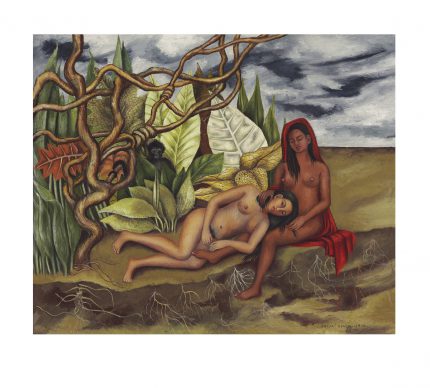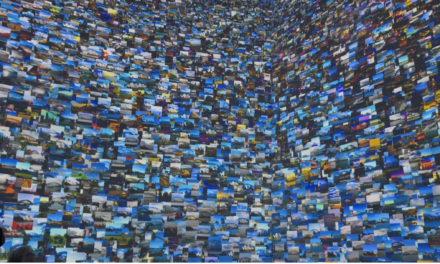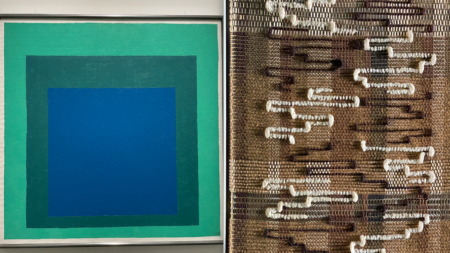
Josef and Anni Albers
To think as a couple
There are artists – and they are in the majority – who think as an individual, and there are others who think as a couple. This is the case, for example, of Christo and Jeanne Claude who created and authored their huge artworks jointly (See here the last report about their last project, L’arc de triomphe wrapped).
51 years together
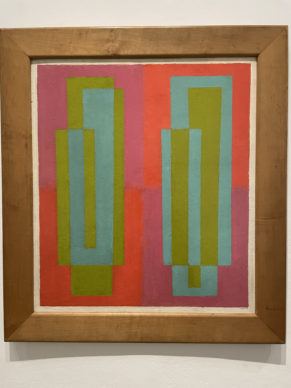
Josef Albers
But there’s an even rarer category of artists who form part of an extremely close couple… except when it comes to their creations. This is true of Josef and Anni Albers. They not only lived together, they also travelled together and engaged in many joint ventures over the course of 51 years.
No collaboration
And yet they never collaborated in their art, except when they made Easter eggs, but does that really count?
Julia Garimorth
The Musée d’art moderne de la ville de Paris has made the decision to stage an exhibition dedicated to Mr and Mrs Albers. “Logical yet playful, balanced yet dynamic, simple yet complex, a model of reciprocal relations and respect”: this is how the curator of the exhibition, Julia Garimorth, envisages their relationship.
Meander

Anni Albers (detail)
She sees it in terms of the meander symbol, a motif she considers – in an original way – to be like a metaphor for the couple. “Josef reproduced the motif extensively, both for his students and in his work. Anni made versions of it which became increasingly complex, until it created a labyrinth.”
Nicholas Fox Weber
Nicholas Fox Weber, director of the Josef and Anni Albers foundation, explains why the idea of an exhibition of the couple’s work is timely, in his view.
The Tate
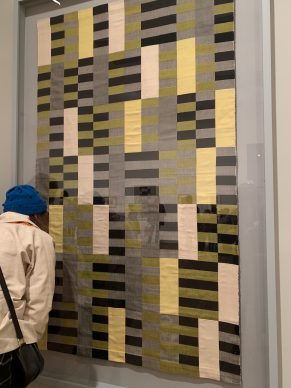
Anni Albers @ Tate
The Tate staged an Anni Albers retrospective in 2018. It raised lots of questions about a complex oeuvre (See here the report about the exhibition at Tate). The exhibition on the couple doesn’t simplify the respective legibility of Anni’s creations.
Lesser known
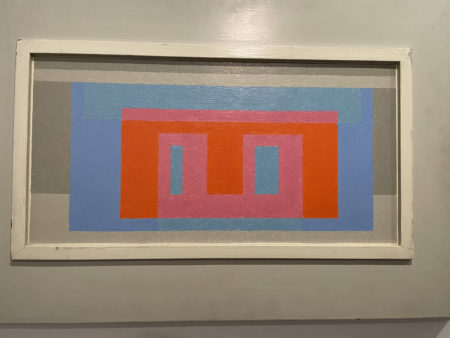
Josef Albers
But the result remains an important gesture within the French museum landscape where the artists are unjustly lesser known.
Bauhaus
The two German artists first met in 1922 at one of the legendary hubs for modernism, the Bauhaus school in Dessau.
Glassworks and weaving
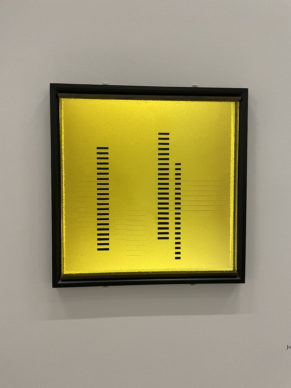
Josef Albers
Here it was decreed that craft was just as important as art. Josef, being short on money, was working in the glassworks studio using found materials and Anni, who wanted to paint, was relegated to the weaving studio. This activity would, however, soon became the raw material for her creations.
Her radical gesture
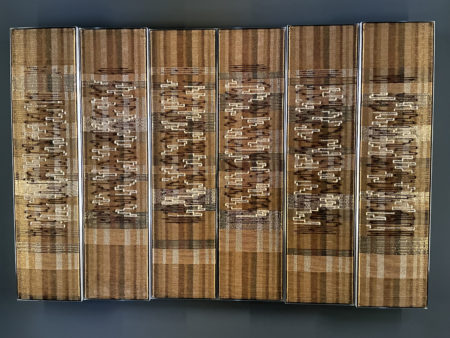
Anni Albers
Instead of painting canvases why not create abstractions using this material? It was a revolutionary act in which individual pieces of fabric became works in themselves. How do we analyse this woman’s radical gesture, not only creating at a time when women were a minority in art, but also creating exclusively using weaving? What works constitute art and what works are decoration?
Answers ?
All this is touched upon at the Parisian exhibition, but similarly to at the Tate, the answers are not made altogether clear.
Black Mountain college

Josef Albers
It was always the case that the couple, united by a humanist desire, wanted to create art for everyone and outside of what was considered fashionable. Anni was Jewish and in 1933 they accepted an invitation from another mythical utopian epicentre in North Carolina, at Black Mountain College.
The revelation of Latin America
Their repeated travels to Latin America would be a revelation for them both. They were fascinated by the textiles and architecture with sophisticated geometric shapes.
Adobe
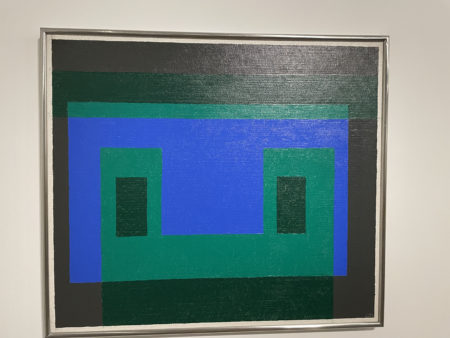
Josef Albers
Josef Albers would take inspiration from the structures made from red clay (adobe) to create an initial series of abstract paintings that played with the relationships between colours. She is less well known but utterly fascinating.
At the Guggenheim New York
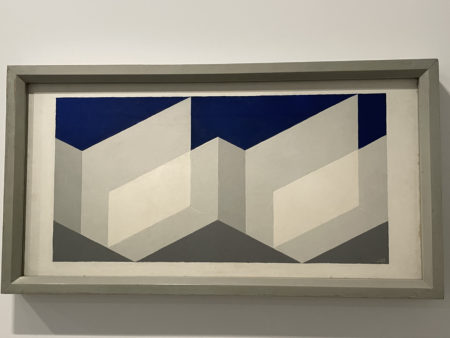
Josef Albers
In 2018 the Guggenheim in New York dedicated an exhibition to the influence of Mexico and its architecture on the creations of Josef Albers, particularly the Adobes (https://www.guggenheim.org/video/josef-albers-in-mexico).
Homage to the square
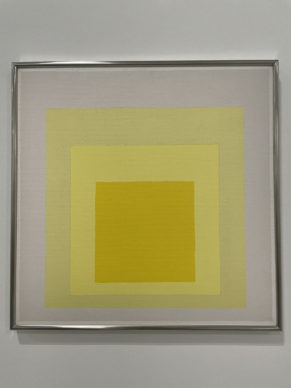
Josef Albers
This series led to another that would become legendary, a theme which the painter would continue to explore until the end of his life and which has been reworked a hundred times: “Homage to the Square”.
A curve of 34 paintings
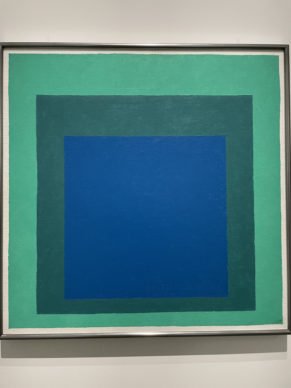
Josef Albers
At the Musée d’art moderne the huge curve that displays the successive variations of “Homage to the Square” across 34 paintings is breathtaking. The painter was exploring interactions between the colours. He said: “art is not an object but rather an experience.”
Sheila Hicks
Coincidentally, I spoke to the American artist who lives in Paris and who is famous for her textile works, Sheila Hicks. She received me at her Parisian studio where she showed me the landscape painting that led to her being accepted onto a masters in painting at Yale.
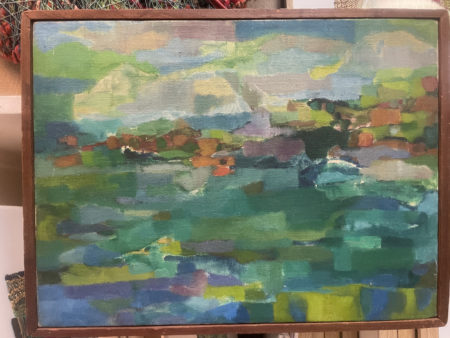
Sheila Hicks
Pupil of Joseph Albers

Sheila Hicks studio
Over four years, from 1954, she attended Josef Albers’ classes at Yale. She tells me how he had a big influence on her use of colours. He was the one who sent her to Chile for the first time in 1959. He also introduced her to the professor who sent her to France for the first time, too. But curiously the dialogue seems to be less established with Anni Albers, who already had a sophisticated mastery of weaving at the time. A living piece of art history.
Until 9 January. Anni and Josef Albers. www.mam.paris.fr.
Support independent news on art.
Your contribution : Make a monthly commitment to support JB Reports or a one off contribution as and when you feel like it. Choose the option that suits you best.
Need to cancel a recurring donation? Please go here.
The donation is considered to be a subscription for a fee set by the donor and for a duration also set by the donor.



